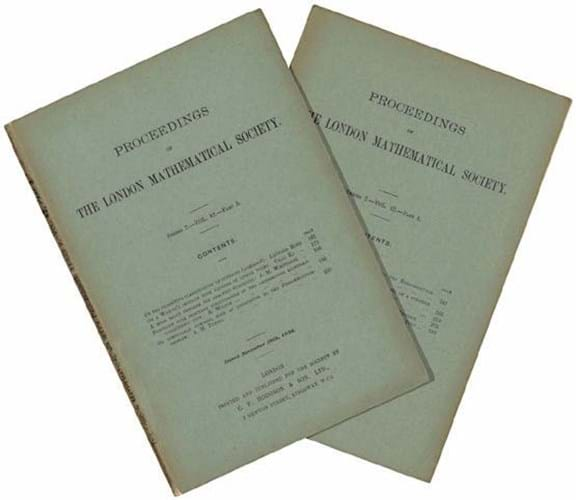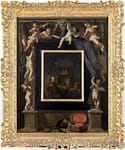
Eight lots in a London sale of December 15 brought six-figure bids.
Part of a Christie’s (25/20/14.5% buyer’s premium) auction, an 1859 first of Charles Darwin’s On the Origin of the Species… sold at a lowestimate £150,000, but a brief letter that he sent in 1872 to Alfred Russell Wallace, whose own early work on evolution has been historically rather overshadowed by that of Darwin, made a much higher than predicted £130,000.
Concerning a proposed response to one of their critics in the matter of evolution, the letter discusses the possibly of a joint rebuttal of views expressed by CR Bree in An exposition of fallacies in the hypothesis of Mr. Darwin, an attack on Darwin’s theory of evolution by natural selection.
Wallace eventually came to Darwin’s defence by submitting a review of the work to Nature under the title ‘The Last Attack on Darwinism’ and addressing Bree’s somewhat numerous errors.
The most expensive of these six-figure lots, at £480,000, was not actually a book but was, quite literally and familiarly, known as the Darwin family microscope.
This Cary microscope of Gouldtype, complete with accessories in its original mahogany box, was given to his son Leonard in 1864 and had remained in family hands ever since.
Darwin’s research career began in 1826 with an investigation into sea creatures dredged up from the Firth of Forth, one that concluded in the following year with the presentation of his first scientific paper to Edinburgh University’s Plinian Society. Those dates coincide with the appearance of this microscope on the market, and of the five other surviving microscopes associated with Darwin, four are known to have been acquired at a later date and the other, it seems, could not have been used for studying marine invertebrates.
In his early research, said Christie’s, Darwin was contributing to Robert Grant’s radical re-interpretation of the animal kingdom, in which apparently simple creatures, like the ‘zoophytes’ he had being studying, were understood to be at the beginning of a natural order that led up to homo sapiens.
Einstein spotlight

Signed and inscribed example of a very famous photograph of Albert Einstein, one taken in 1951 after a 72nd birthday dinner at New York’s Princeton Club. It sold for £45,000 at Christie’s.
An Einstein letter of 1915 on the equivalence principle, magnetism and the Einstein-de Haas experiment, written while he was still finalising his famous general theory of relativity, was one that had made two previous appearances in London sales. It sold this time at £120,000.
On a cost per word basis, however, a slip of paper bearing an autograph aphorism in Einstein’s hand, one that translates as “The flag is a symbol of the fact that Man is still a herd animal” and is signed and dated [19]49, was much more expensive at £17,000.

The two 1936 issues in original wrappers of Proceedings of the London Mathematical Society – £160,000 at Christie’s.
Two 1936 issues in original wrappers of Proceedings of the London Mathematical Society, containing the first appearance of Alan Turing’s ‘On Computable Numbers, with an Application to the Entscheidungsproblem’, a foundation work of modern digital computing, sold at £160,000.
Very different in appeal and bid to far higher than expected sums was a group of lots being sold by a descendant of the navigator and mapmaker Matthew Flinders. Among them was his ancestor’s copy of a defective 1773, second edition of John Hawkesworth’s account of Captain Cook’s first voyage to Australasia.
Almost certainly taken with him on HMS Investigator on his circumnavigation of Australia in 1802-03, it contains Flinders’ own autograph annotations and corrections.
The three volumes in their contemporary bindings lack a couple of plates, but this very special copy sold at £320,000, some four times the high estimate.
Comparable success was enjoyed, at £275,000, by a 20-volume, third-edition set of the Encyclopedia Britannica that was given to Flinders by Sir Joseph Banks for use aboard Investigator.













